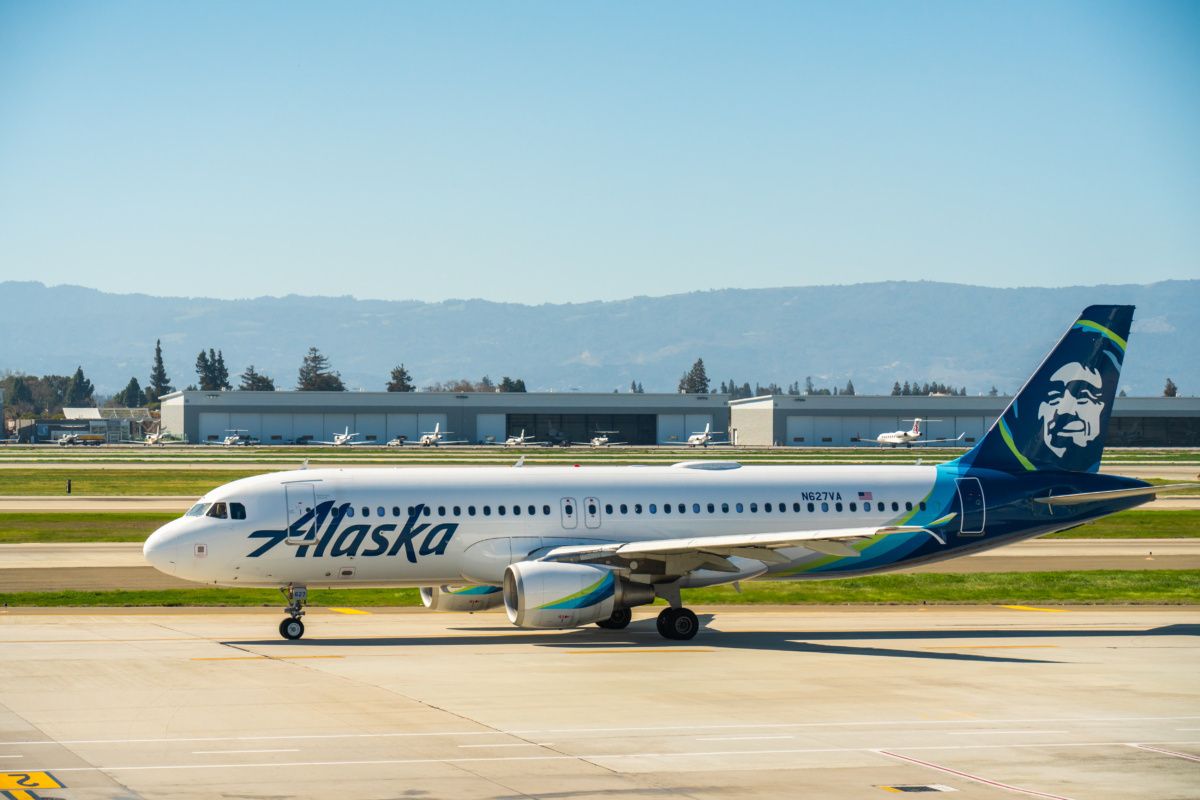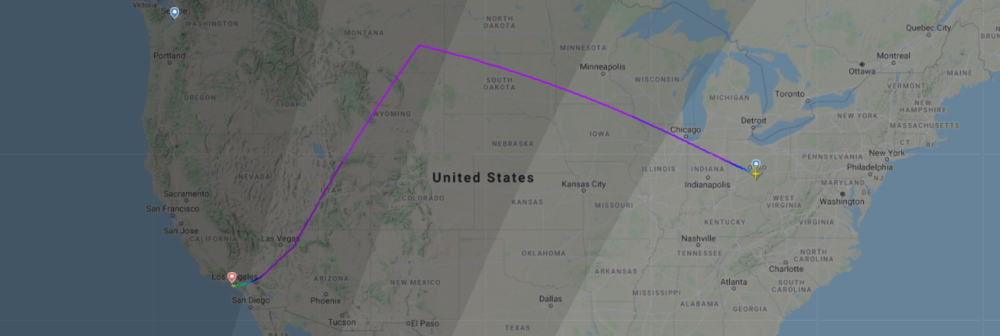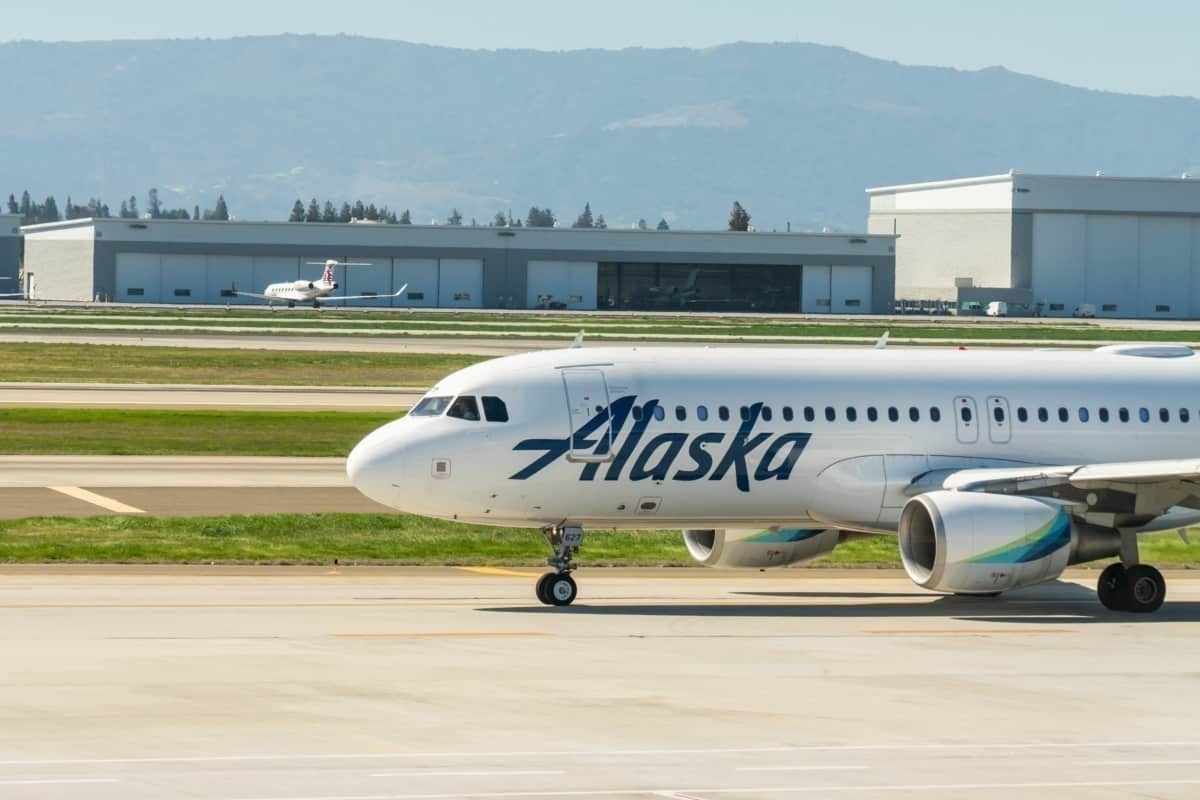An Alaska Airlines Airbus A320 was forced to divert to Los Angeles earlier this week after a mid-flight avionics and anti-ice failure. The aircraft was operating a scheduled passenger service from Columbus to Seattle on Wednesday when the incident occurred.
Seattle bound Alaska Airlines flight diverts to Los Angeles
According to a report by Simon Hradecky in The Aviation Herald, the Alaska Airlines Airbus A320-200 (registered as N848VA) was operating AS1193 on Wednesday evening (local time). The plane was approximately 1,300 kilometers east of Seattle when the decision was made to divert. Complicating matters was a weather system developing over the Rockies at the time.
The flight, AS1193, is the daily 18:35 Alaska Airlines departure from Columbus. The flight to Seattle normally takes around five hours. With the diversion, AS1193 spent five and a half hours in the air, landing in Los Angeles on Wednesday at 21:31 local time. The incident occurred approximately midway through the flight. The diversion added about 460 kilometers to the flight, or around 40 minutes flying time. There were 82 passengers and five crew members onboard
The leased Airbus has been with Alaska Airlines since January 2018. Before that, Virgin America operated the plane since late 2011. Alaska Airlines finalized its merger agreement with Virgin America in late 2016, inheriting many of the latter airline's planes. Wednesday's incident is the first recorded incident involving the nine-year-old N848VA.
Stay informed: Sign up for our daily aviation news digest.
Avionics and anti-icing systems fail
The Aviation Herald reports the first officer's avionics had failed. The anti-ice systems also reportedly failed. An Alaska Airlines spokesperson told Simple Flying a "mechanical issue" was the cause of the diversion.
Avionics is a cover-all term for an aircraft's electrical systems. In modern aircraft, like an Airbus A320-200, multiple flight processes depend on functional avionics. Those systems include engine controls, navigation, flight control systems, communications, lighting systems, flight recorders, weather radar, threat detection, performance monitors, fuel systems, and electro-optic systems. As a rule, the more complex the plane, the more avionics are embedded into it.
As the name suggests, aircraft anti-ice systems prevent the formation of ice on the aircraft's wings. Most anti-ice systems work using heat to evaporate the liquid water when it strikes the protected surface. On jet planes, like the A320-200, the aircraft employs hot engine bleed air to supply the required heat.
Typically, ice forms on an aircraft's leading edges and front surfaces, making wings especially vulnerable to icing. The problem is that ice can alter the way air flows over the wing and tail. It can reduce the lift force that keeps the aircraft airborne. In a worst-case scenario, air cannot flow over the wing's upper surface. This can cause an aerodynamic stall.
According to NASA, ice is a contributing factor in 9.5% of commercial aircraft accidents.
Pilots play it safe and head for LAX
With a weather system building over the Rockies on the night of the flight, the pilots of AS1193 decided to play it safe and diverted to Los Angeles. There were closer airports, but unlike Seattle (where the ground temperature on Wednesday evening was around eight to nine degrees celsius), it was a clear and relatively warm evening in Los Angeles. Alaska Airlines also has a substantial base and support infrastructure at Los Angeles. The airline spokesperson told Simple Flying there were spare aircraft available there.
N848VA landed safely in Los Angeles without issue. Passengers were transferred onto one of the spare aircraft to complete their journey to Seattle.
The plane is now back in the air, flying from Los Angeles to San Jose del Cabo on Thursday morning. N848VA has a full roster of flights scheduled over the remainder of the week.



